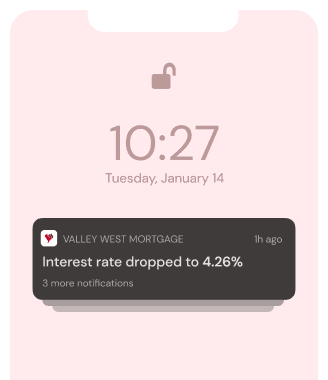What is Personal Mortgage Insurance (PMI)?
While the housing market continues to stabilize across the United States, there’s no guarantee that everyone in need of home financing will have a large down payment. However, you shouldn’t let that stop you from obtaining the mortgage you need for the home you love.
If you can still offer a down payment on your dream home, yet less than 20 percent of the appraisal value of the home, you will be required to obtain personal mortgage insurance (PMI). Personal – or private – mortgage insurance is a policy that protects the lender in the event of a client’s default.
PMI differs from government mortgage insurance in that not everyone will be required to obtain a PMI; however, it can’t hurt to sign up for it regardless. Private companies facilitate PMI’s and act as the beneficiary, while you (the borrower) pays the premium. The rates for a PMI vary depending on how much you borrow and how much you are able to offer as a down payment. Typically, rates for a PMI don’t reach above 2 percent. For example, say you buy a $200,000 house and are able to make a 15 percent down payment. You have to borrow $170,000, with a PMI rate of 0.56 percent. If you multiply your loan amount by the premium (0.0056), that makes your annual premium $952, or a monthly payment of $79.33.
If you are a borrower that needs to obtain or is interested in a PMI, please contact us for further questions and details.
Federal Reserve Halts Purchase Of Bonds.
For the first time in 37 years, the Federal Reserve halted purchase of bonds on Wednesday, October 29. This came as no surprise to many, as the Fed has been steadily cutting purchase of mortgage-backed securities for the entirety of 2014, but it certainly is jarring to see the program finally come to a halt.
What does this mean for you the borrower and client? It means that there is potential for government debt prices to be pushed down in potential declining demand. This also means that this action could raise yields simultaneously.
The process that central banks began after the recession, called quantitative easing (QE), is a method used to stimulate monetary value when an economy suffers to do so itself. When the Fed began the program, the intention was never to last forever, but just long enough to see the market stabilize on its own, at which point the “easing” would begin. This works by the central banks buying financial assets from commercial banks, which lowers yields and increases monetary base at the same time.
Although tapering didn’t begin for the Fed until last December, the 10-year Treasury yield had already climbed to almost 3 percent. This is generally seen as a good sign by economists; while this is not a high number, it is higher than the previous percentage which was below 2 percent. The higher the treasury yield, the better the economic outlook. With the purchase of bonds being halted, experts believe that the economy and monetary value could continue to see a boost, bettering both the market and the economy.
Stay up-to-date on the bond market and treasury yields at Forbes.com or mortgagewatchdaily.com.
Third Quarter hurts Freddie Mac.
Freddie Mac sold fewer homes in the third quarter then they have earlier in the year. Freddie Mac being one half of the Lending Powerhouse Team, sold more than 25,300 repossessed homes in the third quarter, down 13.5% from the nearly 30,000 in the previous three months. It was also a 17% decline from the record-setting 31,600 sold in the first quarter. Freddie Mac also repossessed another 24,300 homes back into the inventory. At the end of the quarter, Freddie held 60,000+ REO on its books, which has been reduced ever so slightly — as new foreclosures are completed — from 75,000 one year ago.
If this pattern continues and the GSE reduces a net of 1,000 REO from its stock shelves and inventory lists during every quarter, it would still take 60 quarters to unload the entire stock. That is just shy of 15 years for all of you keeping score, and not to mention that with a severely constricted foreclosure pipeline due to recent servicing problems and new regulations. As things begin to open up, the market will be asked to take in even more REO sales just to maintain their current trends.
"This is Due to continued delays in the foreclosure process for single-family mortgages," Freddie Reported. "We expect these delays will likely continue into 2012. However, we expect our REO inventory to remain at elevated levels."
While all of this is going on, nonperforming assets continue to mount. Totaling 6.6% of its mortgage portfolio in the third quarter of 2011. That number has risen up by 3.2% from the previous quarter. The Obama Administration and the Federal Housing Finance Agency began asking market participants for bright ideas on selling these properties in large quantities and have even thought of possibly renting them to help manage the still accumulating problem holding back housing and as an extension the overall economy of 2011.
FHFA Acting Director Edward DeMarco reiterated thursday, that there is such a strategy that will not be implemented nationwide but on a local level.
